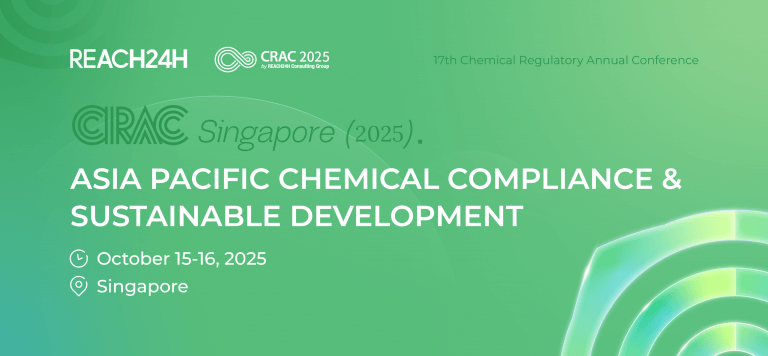Latest Update: AUD 18,780 Fines for Illegally Importing Equipment Containing the R410a Refrigerant
The Australian government is intensifying its regulation of ozone-depleting substances (ODS) and synthetic greenhouse gases (SGGs) to fulfill international environmental commitments and address the threat of climate change. In a recent case, a company was heavily fined for importing equipment containing prohibited greenhouse gases without a license, demonstrating the government’s commitment to regulatory enforcement.
In a recent announcement, the Australian Department of Climate Change, Energy, the Environment and Water (DCCEEW) stated that, under the Ozone Protection and Synthetic Greenhouse Gas Management Act 1989, a company was fined AUD 18,780 for illegally importing equipment containing the R410a refrigerant.
R410a, being chlorine-free and non-ozone-depleting, was initially adopted as a replacement for earlier chlorine-containing refrigerants such as R-22. However, it has a high Global Warming Potential (GWP), and its release into the atmosphere significantly contributes to the greenhouse effect.
This case exemplifies the government’s strict enforcement of regulations, controlling the import of restricted substances, and mitigating environmental risks.
DCCEEW has established a cooperative mechanism with Australian Customs to conduct joint inspections of inbound goods, ensuring that business entities operate in compliance. This penalty serves as a precedent for regulatory enforcement, further reinforcing the government’s stance on upholding the authority of environmental regulations.
Ozone Protection and Synthetic Greenhouse Gas Management Act 1989
Australia’s Ozone Protection and Synthetic Greenhouse Gas Management Act 1989 is the country’s primary legislation aimed at protecting the ozone layer and mitigating the impacts of climate change.
The main objective of this Act is to regulate ozone-depleting substances (ODS) and synthetic greenhouse gases (SGGs). It aims to fulfill Australia’s international obligations under the Vienna Convention for the Protection of the Ozone Layer and the Montreal Protocol.
Through this Act and related regulations, the Australian government has implemented the Ozone Protection and Synthetic Greenhouse Gas Management Program, which uses permits, quotas, industry management, and economic measures to comprehensively control the manufacture, import, export, use and disposal of harmful gases that affect the ozone layer and climate.
DCCEEW is responsible for issuing permits to major users of these gases, including businesses and technicians. It is illegal for any company or individual to manufacture, import, or export “Scheduled Substances” or related equipment specified under the Act without obtaining the necessary permits.
What are "Scheduled Substances"?
Scheduled Substances are those strictly regulated under the Ozone Protection and Synthetic Greenhouse Gas Management Act 1989. These substances are primarily divided into two categories: ozone-depleting substances (ODS) and synthetic greenhouse gases (SGGs).
All these “Scheduled Substances” are subject to strict controls on their import, manufacture, export, use, and disposal to ensure that Australia meets its commitments under international environmental agreements.
Ozone-Depleting Substances (ODS)
These substances are regulated because they deplete the stratospheric ozone layer. They are being phased out under the Montreal Protocol. Key examples include:
Chlorofluorocarbons (CFCs): Examples include CFC-11 and CFC-12, previously used in refrigerators, air conditioners, and aerosol sprays.
Halons: Examples include Halon 1211 and Halon 1301, mainly used in fire suppression systems.
Carbon Tetrachloride: Previously used as a solvent.
Methyl Chloroform: Previously used as an industrial solvent.
Hydrochlorofluorocarbons (HCFCs): Transitional substitutes for CFCs, mainly used in air conditioning and refrigeration systems, such as HCFC-22 (R22), but now also being phased out.
Methyl Bromide: A fumigant used in agriculture and quarantine.
Synthetic Greenhouse Gases (SGGs)
These substances do not deplete the ozone layer but have very high Global Warming Potential (GWP) values, significantly intensifying the greenhouse effect. The Act controls their import and manufacture through quotas and permits. Key examples include:
Hydrofluorocarbons (HFCs): Widely used as ODS substitutes in refrigeration, air conditioning, and foam production but are being gradually reduced and phased out. Examples: HFC-134a, R410a, HFC-32.
Perfluorocarbons (PFCs): Mainly used in semiconductor industry.
Sulfur Hexafluoride (SF6): Mainly used in high-voltage electrical switchgear.
Nitrogen Trifluoride (NF3): Used in semiconductor and solar panel manufacturing.
Compliance Recommendations for Businesses
This enforcement action serves as a warning to companies involved in the export or import of refrigeration, air conditioning, and similar equipment to or from Australia. It demonstrates that Australian regulators are actively enforcing relevant laws and adopting a “zero-tolerance” approach to violations.
To ensure compliance, REACH24H recommends the following measures for relevant businesses:
Product Composition Review: Before importing any equipment that may contain refrigerants (e.g., air conditioners, refrigerators, heat pumps), confirm whether it contains R410a or other substances regulated under the Act.
Permit Application: If the product contains controlled substances, businesses must apply for and obtain the appropriate equipment import permit from DCCEEW before shipping the goods. Shipments must not be arranged without the necessary permits.
Supply Chain Communication: Strengthen communication with upstream suppliers to ensure accurate and complete chemical composition information, making it a key part of supply chain due diligence.
Internal Process Audits: Regularly review internal procurement and import processes to ensure compliance requirements are communicated to relevant departments and personnel, avoiding violations caused by information gaps or negligence.
Final Remarks
With increasing global attention to climate change, Australia and other countries are expected to further tighten regulations on such chemicals.
REACH24H reminds businesses to thoroughly review equipment and substances involving “Scheduled Substances” and strictly adhere to legal and regulatory requirements when conducting related activities. This ensures full compliance in import and export operations, mitigates legal risks and economic losses, and contributes to environmental protection.





